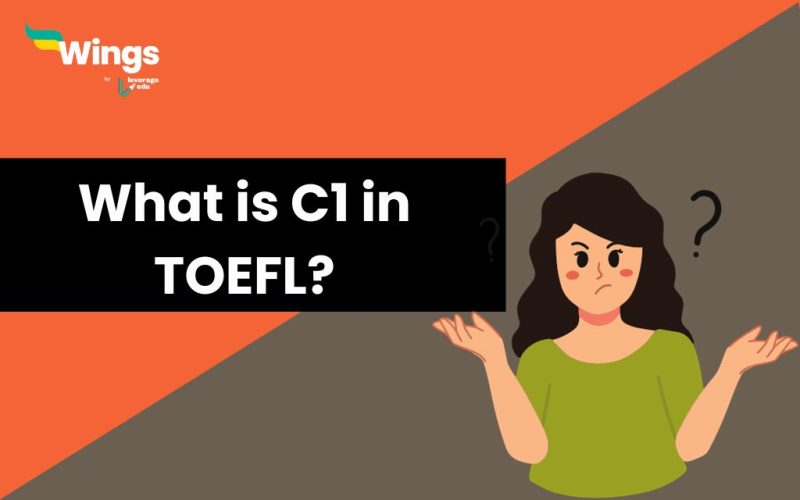Individuals intending to pursue their higher education at notable universities and colleges must take their TOEFL exam at the C1 level. TOEFL C1 is primarily undertaken to get admission into the top institutions abroad. A C1 level means a score of 95+ on the TOEFL exam. Individuals who wish to take the exam at the C1 level must aim at scoring at least a 24 on the Reading section, 22 in Listening, 25 in Speaking, and 24 in Writing.
This Blog Includes:
- What is CEFR?
- What are the Different Levels of CEFR? (H3)
- TOEFL Scores Conversion to CEFR Levels
- Section-Wise TOEFL Scores to CEFR Levels conversion
- TOEFL Listening Section Scores to CEFR Levels (H3)
- TOEFL Reading Section Scores to CEFR Levels (H3)
- TOEFL Writing Section Scores to CEFR Levels (H3)
- TOEFL Speaking Section Scores to CEFR Levels (H3)
- FAQs
What is CEFR?
Developed by the Council of Europe, the Common European Framework of Reference for Languages (CEFR) offers a standardised six-level scale for describing language proficiency. This framework facilitates consistent evaluation of learners, educators, and assessments across diverse European languages. The six levels, ranging from A1 (elementary) to C2 (mastery), provide a clear and readily understood vocabulary for describing language abilities, enhancing transparency and fostering collaboration in language education and assessment.
It is used to:
- Measure proficiency in various languages spoken in Europe.
- The Common European Framework of Reference for Languages (CEFR) serves as a valuable tool for establishing language proficiency benchmarks for both instructors and learners.
- This comprehensive six-level scale encompasses elementary stages (A1) to full mastery (C2), and provides a common reference point for setting clear expectations and measuring progress in language acquisition.
- It aims to assess and validate the language proficiency of non-native speakers. By achieving recognized proficiency levels, non-native speakers can unlock broader academic and professional opportunities within Europe. This can, in turn, enhance their competitiveness and foster greater mobility across language barriers.
What are the Different Levels of CEFR? (H3)
CEFR Levels: Refer to the table given below to go through the various CEFR Levels. Going through them will give you a good understanding of the CEFR framework.
TOEFL Scores Conversion to CEFR Levels
CEFR Levels to TOEFL Score Conversion: CEFR has emerged as a universally accepted benchmark for evaluating language ability. Its six-level scale, spanning from elementary (A1) to mastery (C2), provides a transparent and consistent measuring stick for gauging language skills across diverse contexts.
The accompanying table offers a valuable reference point, mapping CEFR levels to their corresponding scores on the TOEFL iBT test. This correlation enables individuals and institutions to readily translate TOEFL performance into the broader framework of CEFR proficiency, fostering enhanced communication and effective evaluation.
| CEFR Level | TOEFL Score (iBT) |
| A1 | – |
| A2 | – |
| B1 | 42-71 |
| B2 | 72-94 |
| C1 | 95-113 |
| C2 | 114-120 |
Section-Wise TOEFL Scores to CEFR Levels conversion
CEFR Levels to TOEFL Score Conversion (section-wise): Refer to the tables below to go through the section-wise TOEFL Scores conversion to CEFR Levels.
TOEFL Listening Section Scores to CEFR Levels (H3)
Have a look at the table below to understand the conversion of TOEFL Listening scores to CEFR levels.
TOEFL Reading Section Scores to CEFR Levels (H3)
Have a look at the table below to understand the conversion of TOEFL Reading scores to CEFR levels.
TOEFL Writing Section Scores to CEFR Levels (H3)
Have a look at the table below to understand the conversion of TOEFL Writing scores to CEFR levels.
TOEFL Speaking Section Scores to CEFR Levels (H3)
Have a look at the table below to understand the conversion of TOEFL Speaking scores to CEFR levels.
So that was all about TOEFL C1. Hope the blog has answered your questions regarding the topic.
Related Blogs:
FAQs
Ans: Many students have a preconception that IELTS is easier than TOEFL. However, the answer is much more subjective. With ETS introducing the revised exam pattern, TOEFL proves to be a shorter exam with a lower application fee. You will also have an easier time with the shorter writing section in TOEFL. Hence, the revised TOEFL is much easier than IELTS in many aspects.
Ans: Those who want to study in reputable institutions overseas should strive for a TOEFL iBT score of 100 to 120.
Ans: There is no ordained set of credentials for taking the TOEFL Exam. The test requires that you have at least qualified for your class 10+2 boards from a reputable institution.
Visit the Leverage Live page of Leverage edu or contact our study abroad experts at 1800-57-2000 to strengthen your scores and application to secure your spot in your dream college.
 One app for all your study abroad needs
One app for all your study abroad needs















 60,000+ students trusted us with their dreams. Take the first step today!
60,000+ students trusted us with their dreams. Take the first step today!